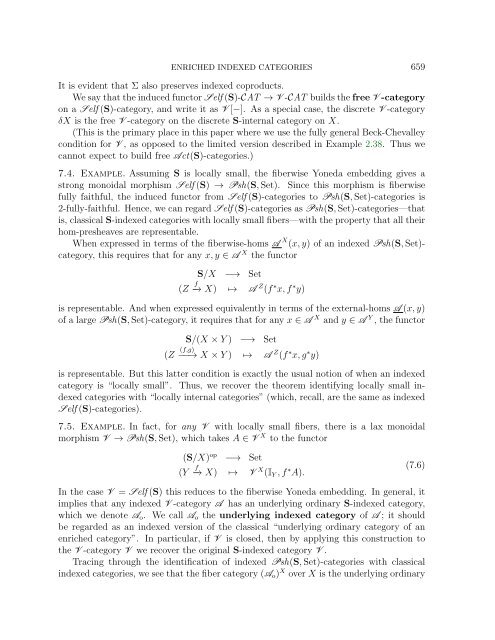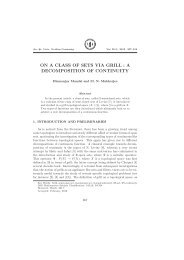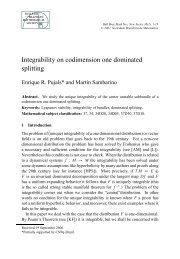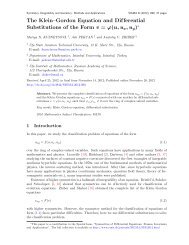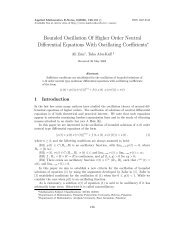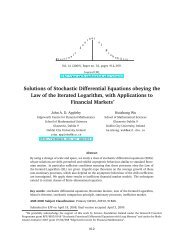ENRICHED INDEXED CATEGORIES Contents 1. Introduction
ENRICHED INDEXED CATEGORIES Contents 1. Introduction
ENRICHED INDEXED CATEGORIES Contents 1. Introduction
You also want an ePaper? Increase the reach of your titles
YUMPU automatically turns print PDFs into web optimized ePapers that Google loves.
<strong>ENRICHED</strong> <strong>INDEXED</strong> <strong>CATEGORIES</strong> 659It is evident that Σ also preserves indexed coproducts.We say that the induced functor Self (S)-CAT → V -CAT builds the free V -categoryon a Self (S)-category, and write it as V [−]. As a special case, the discrete V -categoryδX is the free V -category on the discrete S-internal category on X.(This is the primary place in this paper where we use the fully general Beck-Chevalleycondition for V , as opposed to the limited version described in Example 2.38. Thus wecannot expect to build free Act(S)-categories.)7.4. Example. Assuming S is locally small, the fiberwise Yoneda embedding gives astrong monoidal morphism Self (S) → Psh(S, Set). Since this morphism is fiberwisefully faithful, the induced functor from Self (S)-categories to Psh(S, Set)-categories is2-fully-faithful. Hence, we can regard Self (S)-categories as Psh(S, Set)-categories—thatis, classical S-indexed categories with locally small fibers—with the property that all theirhom-presheaves are representable.When expressed in terms of the fiberwise-homs A X (x, y) of an indexed Psh(S, Set)-category, this requires that for any x, y ∈ A X the functorS/X −→ Set(Z f −→ X) ↦→ A Z (f ∗ x, f ∗ y)is representable. And when expressed equivalently in terms of the external-homs A (x, y)of a large Psh(S, Set)-category, it requires that for any x ∈ A X and y ∈ A Y , the functorS/(X × Y ) −→ Set(Z −−→ (f,g)X × Y ) ↦→ A Z (f ∗ x, g ∗ y)is representable. But this latter condition is exactly the usual notion of when an indexedcategory is “locally small”. Thus, we recover the theorem identifying locally small indexedcategories with “locally internal categories” (which, recall, are the same as indexedSelf (S)-categories).7.5. Example. In fact, for any V with locally small fibers, there is a lax monoidalmorphism V → Psh(S, Set), which takes A ∈ V X to the functor(S/X) op −→ Set(Y f −→ X) ↦→ V X (I Y , f ∗ A).(7.6)In the case V = Self (S) this reduces to the fiberwise Yoneda embedding. In general, itimplies that any indexed V -category A has an underlying ordinary S-indexed category,which we denote A o . We call A o the underlying indexed category of A ; it shouldbe regarded as an indexed version of the classical “underlying ordinary category of anenriched category”. In particular, if V is closed, then by applying this construction tothe V -category V we recover the original S-indexed category V .Tracing through the identification of indexed Psh(S, Set)-categories with classicalindexed categories, we see that the fiber category (A o ) X over X is the underlying ordinary


